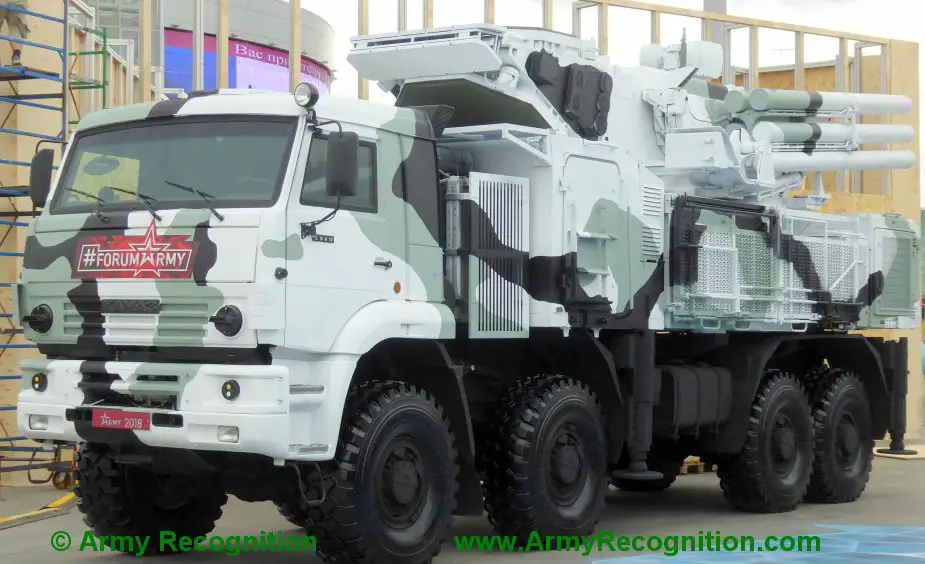Russia designs robotic Pantsir-S for air defense
The Russian armed forces will receive a robotic system designed on the basis of the Pantsir-S antiaircraft missile gun. It will be able to automatically detect, identify and destroy targets without an operator’s interference and thus prevent risks to officers and men. The weapon will be able to operate in super low temperatures and in a contaminated environment.

Pantsir-S gun-missile air defense system in Arctic livery (Picture source: Army Recognition)
Sources in the Russian Defense Ministry said the decision to design the robot had been made and technical requirements approved. The new robotic system will have only a driver on board. There will be no other crew member, as the computer will control the whole operational sequence. The onboard equipment will be connected with automatic command systems by a closed data transmission segment. The sources said the robotic air defense system will receive airspace information from its own radar and more powerful outside radars on the ground, helicopters, warships, drones and early warning aircraft.
The computer of the launcher will analyze the information, compare data and create a single picture of the combat. It will identify the most dangerous flying craft, select the weapon (missile or gun), and fire to destroy the target. The sources could not give the exact deadline for the creation of the robotic launcher. "In Syria, we saw combined airstrikes by drones and missiles which simultaneously approached targets from various directions," expert Vadim Kozyulin said. "The weapons and tactic are becoming more dangerous. Loitering bombs capable of destroying pinpoint targets are produced by nearly 20 countries. Drones attack in swarms. A rapid reaction to the changing situation and automatic processes are necessary to repel the attacks. A robotic Pantsir will correspond to modern trends," he said.
The integration of outside radars will detect the attacking vehicles in advance. It will help prudently repel the air raid, the expert said.
Maximum automation of air defense weapons plays a major role, expert Vladislav Shurygin said. "Air defense will be the first target for attack in modern warfare. Robotic weapons will save the lives of officers and men. The weapons can operate in super low temperatures and chemical contamination. The army will save money on costly survival events," he said.
Pantsir became operational in the Russian army in November 2012. An Arctic modification was later designed. The weapon has to provide a short-range defense of military and civilian facilities, firing positions and marching hardware columns. It is carried by an all-terrain wheeled undercarriage. The Russian army operates several dozen vehicles.
Pantsir was for the first time engaged in combat in Syria. The weapon is operated by the Russian and Syrian armies there. The first launchers were deployed at Humaymim airbase in 2015. In 2018, Pantsir repelled two massive air raids on the Russian airbase. In the first two years of engagement, it downed 54 MLRS missiles and 16 terrorist drones.
The Syrian air defense engaged Pantsir-S1 in April 2018 to repel a massive US-led airstrike. The Russian Defense Ministry said 71 out of 103 cruise missiles were intercepted. Pantsir downed 23 out of 25 targets, the Izvestia said.
© Copyright 2019 TASS / Army Recognition Group SPRL. All rights reserved. This material may not be published, broadcast, rewritten or redistributed.


























